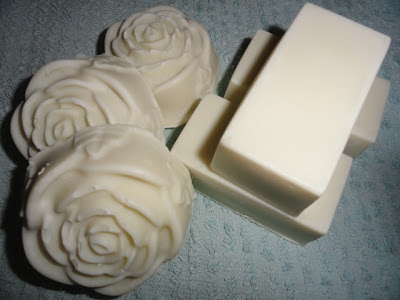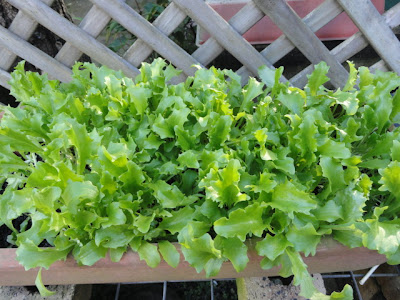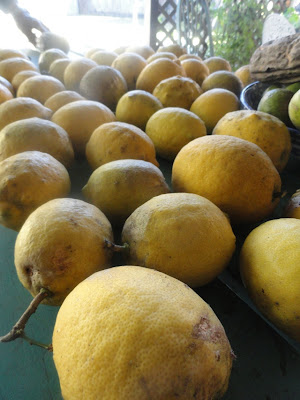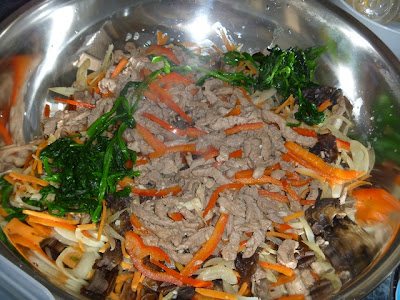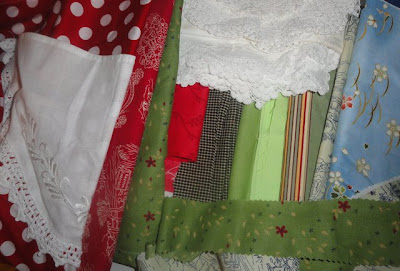It was raining and cold here on the weekend, I had a few things to catch up on, and one of them was a batch of laundry liquid. I know many of you already use this but there are many who haven't made the leap yet, so I'm hoping that another post about how easy it is to make and how much it will save you, will be the push you need towards making a batch yourself.
All you need is water, soap, borax and washing soda, all the products are usually available at the supermarket. The soap can be either soap flakes or soap that you've grated yourself and it can be any kind of soap - laundry soap, homemade soap or Sard soap, if you want an extra cleaning boost in your washing machine. Sard soap contains an oxy-bleach and would be excellent if you're washing a lot of white clothes or you have children or a tradesman in the family.
In addition to your ingredients, you'll need a medium sized saucepan, a slotted spoon to stir with, 10 litre bucket, funnel, jug and containers to hold 10 litres of laundry liquid.
Above you can see the process. The ingredients are measured into a saucepan containing one litre/quart of water. Add one cup of soap flakes, half a cup of borax and half a cup of washing soda. Turn on the heat and stir. Bring the mix to the boil, stirring as it heats, and by the time the mixture is boiling, ALL the ingredients should be dissolved.
So, you've nearly finished and it's only taken less than ten minutes so far. When you're sure it's completely dissolved, pour the mixture into your 10 litre bucket and fill the bucket to the top with water from the tap. You've made laundry liquid! And it's cost you about $2 Australian. If you bought the equivalent about of laundry liquid here it would cost you between $80 and $90 (see below for cost comparisons in USA and UK). So when you take into account the making, pouring and storing, it's taken you about 30 minutes. I make this about once every four months. If you have a large family, you might make it every two months. And it will save you about $80 every time you make it. How long would you have to work to make $80? Saving it is much easier.
Once you have the laundry liquid in your bucket, stir it around again, then start filling your containers. It's important to leave enough room in your containers to shake the liquid before you use it because it will separate. See below for more information about this. As you can see, I store my laundry liquid in a five litre blue container, a three litre glass jar, a one litre glass jar and a 750 ml bottle. I use the bottled laundry liquid for cleaning. It's great for cleaning up spills, for cleaning around light switches, door handles, walls and floors. I use that little blue scoop to put the liquid into my front loader washing machine and I always use the one litre jar as my working jar. When it's empty, I refill it from the larger containers.
Above is the laundry liquid after it's been sitting for 24 hours. It's clearly separated into to layers - the top layer is gel-like, the bottom layer is watery. You need that space in your container to shake and mix before you use it.

And here is my cleaning liquid that I shook just to show you what it looks like. So don't think you've done anything wrong if your mixture separates, it's fine, it just needs a good shake. And to answer Shelly's question yesterday, this is safe in septic tanks but not for grey water. The borax in the mix builds up as boron in the garden and that is harmful to plants. If you want to use your grey water, leave out the borax.
ADDED LATER: This is also an excellent stain remover. I rub it thoroughly onto a stain with my fingers, let it sit for an hour, then put it in with the normal wash. It works.
Don't expect homemade laundry liquid, or the powder, to make suds. Clean washing doesn't need suds to make it clean. The froth and bubbles you get with commercial cleaners is made with chemicals not needed for cleaning but are included because they think we want bubbles.
I've written before about the small steps we all take. This is one of them. This small step doesn't cost a lot, it is easy to make and it lasts a long time. But if you do it, it will save your hard earned money, it will mean you'll have fewer chemicals in your home, you'll buy less packaging and the water you eventually send into the system will not be laden with salt, phosphorus and fillers. Maybe this small step is not so small after all.
ADDITIONAL INFORMATION


